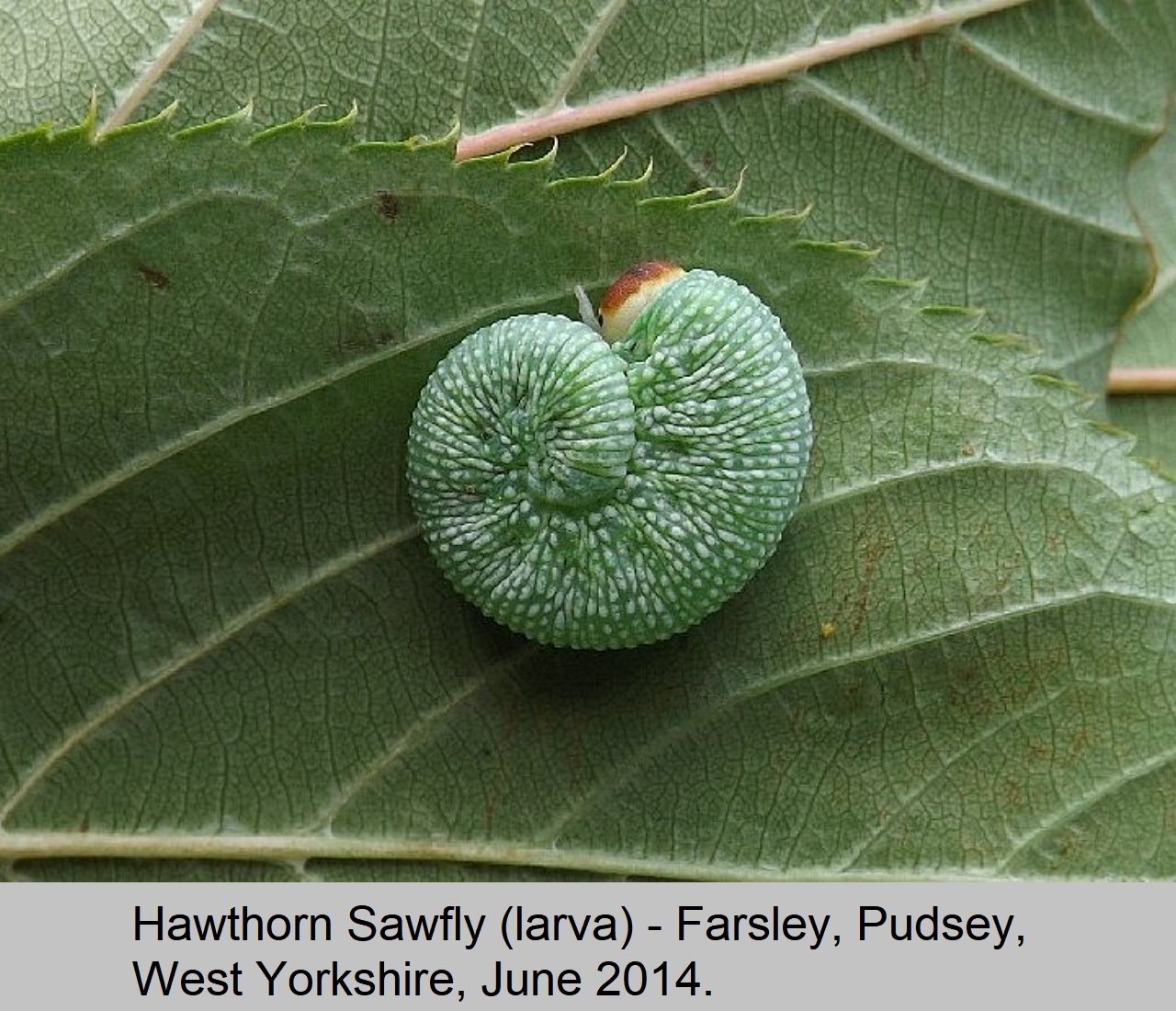|
|
||||||
|
|
|
|||||
| (Linnaeus 1761) | (Linnaeus 1761) | (Linnaeus 1761) | (Linnaeus 1761) | (Stephens 1835) |
| Hymenoptera - Apidae | Hymenoptera - Apidae | Hymenoptera - Apidae | Hymenoptera - Apidae | Hymenoptera - Andrenidae |
| White-tailed Bumble Bee | White-tailed Bumble Bee | White-tailed Bumble Bee | White-tailed Bumble Bee | Hawthorn sawfly |
| Bombus lucorum | Bombus lucorum | Bombus lucorum | Bombus lucorum | Trichiosoma tibiale |
 |
 |
|
Status: Resident in UK. When Around: Spring through to Autumn. Habitat: They inhabit gardens, hedgerows, parks woodland rides and clearings. Very often they inhabit birds nests, holes in tree's and in the ground at the base of bushes. Comment: Wide spread throughout most of Britain. This is probably our most common bumble bee. |
 |
| (Muller 1766) | (Muller 1766) | (Muller 1766) | (Stephens 1835) | (Stephens 1835) |
| Hymenoptera - Andrenidae | Hymenoptera - Andrenidae | Hymenoptera - Andrenidae | Hymenoptera - Andrenidae | Hymenoptera - Andrenidae |
| Tawny Mining Bee | Tawny Mining Bee | Tawny Mining Bee | Hawthorn sawfly | Hawthorn sawfly |
| Andrena fulva | Andrena fulva | Andrena fulva | Trichiosoma tibiale | Trichiosoma tibiale |
 |
 |
Status: Resident in UK. When Around: Late March until August. Habitat: Gardens, hedgerows, parks wood rides and clearings. Often they inhabit birds nests, holes in tree's and in the ground at the base of bushes. Comment: Wide spread and common in many parts of England and Wales, and is scarce in Scotland. The solitary female mines out the nest entrance, producing a series of volcano shaped mounds. |
 |
Status: Resident in UK. When Around: Adults are on the wing from April until June. Habitat: They inhabit scrubby places where the Hawthorn grows, the larvae feed upon its leaves. Comment: This species of sawfly is widely distributed throughout the British Isles, and is quite common especially in the south. |
| (Fabricius 1804) | (Fabricius 1804) | (Fabricius 1804) | (Fabricius 1804) | (Fabricius 1804) |
| Hymenoptera - Crabronidae | Hymenoptera - Crabronidae | Hymenoptera - Crabronidae | Hymenoptera - Crabronidae | Hymenoptera - Crabronidae |
| Digger Wasp | Digger Wasp | Square-headed Wasp | Square-headed Wasp | Square-headed Wasp |
| Ectemnius continuus | Ectemnius continuus | Ectemnius ruficornis | Ectemnius ruficornis | Ectemnius ruficornis |
|
|
Status: Resident in UK. When Around: Adults are on the wing from May to October. They feed on other insects. Habitat: They inhabit wood land, hedgerows and other bushy places. Comment: It is most common in southern England. Although scarcer and more localised it is also to be found in Wales, Ireland, northern England and southern Scotland. |
|
 |
Status: Resident and Migrant to the UK. When Around: The solitary adults are around from May until October. Habitat: They inhabit wood land, hedgerows and other bushy places. Comment: This species has been recorded from Britain as far north as Westmoreland. There are about a thousand recorded sightings of this wasp over the last few decades. |
|
Hymenoptera - Crabronidae Parasitic Wasp |
Hymenoptera - Crabronidae Parasitic Wasp |
Hymenoptera - Crabronidae Parasitic Wasp |
||
| Anomoloninae ssp. | Anomoloninae ssp. | Anomoloninae ssp. | ||
|
|
 |
Status: Resident in UK. When Around: Most of the year, most common from spring through to autumn. Habitat: They inhabit parks, gardens, wood land, hedgerows and other places where there are other insect larvae. Comment: This species is part of an aggregate group of ichneumon flies which are very similar in appearance. It is almost impossible to tell them apart without microscopic examination. |
 |
Status: Resident in UK. When Around: Adults are around from early summer through to Autumn. Habitat: Parks, gardens, wood land, hedgerows and other places where there are other insect larvae. Comment: Part of an aggregate group of ichneumon flies which look alike, and need examining with a microscopic to tell them apart. |
| (Shuckard 1837) | (Shuckard 1837) | |||
|
Hymenoptera - Chrysididae Parasitic Wasp |
Hymenoptera - Chrysididae Parasitic Wasp |
|||
| Ruby-tailed Wasp - Chrysis ignita ab.. | Ruby-tailed Wasp - Chrysis ignita ab.. | |||
|
|
Status: Resident in UK. When Around: From around April through to September. This wasp is also called the 'Cuckoo Wasp', laying it's eggs in other insects nests, where it's larvae devour the hosts own young. Habitat: They are restless, and constantly move around, even when not in flight. Comment: This group small similar looking wasps, that are very difficult to identify. This wasp is common throughout the UK. |
|
|
|
| Next Micro Moths - Page 1 |
|
Contact Website Manager dave.hatton29@btinternet.com |
Web Designer Dave Hatton |
Dave Hatton reserves the copyright on all images. © 2022 |
||||||